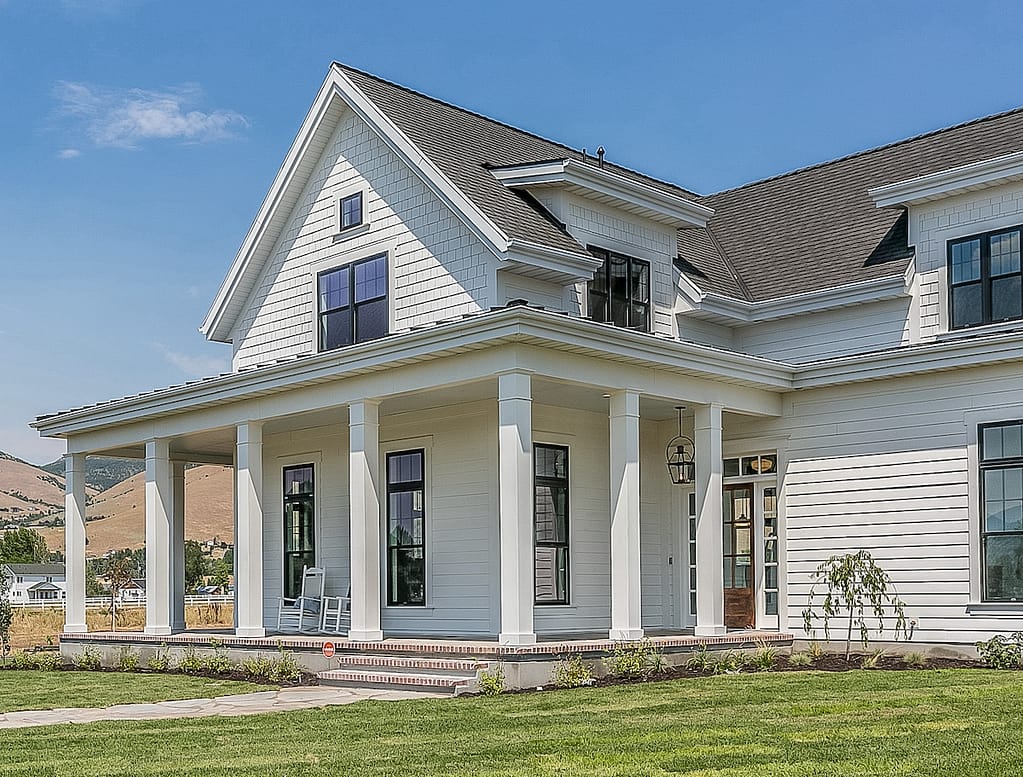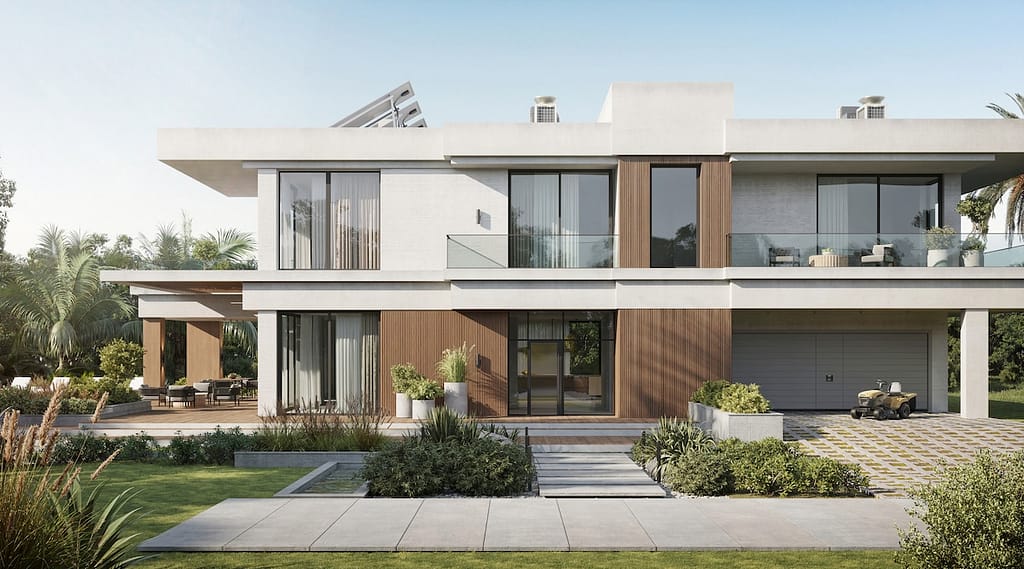Home styles are as cyclical as the economy and are often a reflection of economy and other factors influencing our world.
The end of one century and the beginning of another ushered in the roots of American modern architecture, which many experts trace to the 1893 Chicago World’s Fair. Born out of the modern art movement, “modern” includes the Art Deco designs of the 1920s. Prairie, Bungalow and Craftsman home styles were other evolutions away from the elaborate and highly decorative Victorian era styles that prevailed in the 19th century. Colonial-Revival homes, which peaked in the 1940s, marked a return to 1800s influence with traditional symmetrical styling and detailed finishes. After World War II, styles were often ranch or Cape Cod influenced, but the post-war styles were more about function than form.
As the country recovered from wartime, mid-century modern homes were an expression of optimism characterized by very wide, low footprints with large, open spaces, floor-to-ceiling windows, and an emphasis on bringing the outdoors in. The ‘60s and ‘70s era was about self-expression, with the introduction of contemporary styles with split-level designs leading the trend. Despite “modern” and “contemporary” often being used as synonyms, purists note key differences. Both styles celebrate natural materials and clean lines, but contemporary would be considered a more updated execution. Like modern art, modern architecture uses bold blocks of color in place of patterns and a much more structured and formal approach with focus on function over form. Conversely, contemporary styles made use of neutral colors in their natural form with loosened designs embracing asymmetrical facades and curves and mixed materials.
The evolution of building materials opened up an opportunity to choose from just about any style imaginable. If you wanted New England shake siding or adobe style stucco, there was a product readily available that could simulate the real thing in any climate condition. Neo-Eclectic styles, influenced by a variety of different classical styles, were the push-back against unadorned, cold and modern styles. Often criticized as a hodgepodge of styles put together without a lot of thought, “McMansion” became the term in the 1980s to describe some of the large, ostentatious homes built to serve a “new money crowd” seeking to shirk the depravity and practicality of their parents’ generation. Then, as the country faced recession in the ‘90s, everything became about retreating from the opulent ‘80s and getting back to the basics.
As they say, history repeats itself. At the beginning of the 21st century, with the digital age emerging and the “Smart House” concept on the rise, a shift back to modern and contemporary styles began to reemerge, bringing back into vogue some of the influences of these styles from the early and mid-1900s. As a response to the brashness and chaos of urban life pre-pandemic, minimalism, often Asian-influenced, became the new style guide, shedding its influence across almost every home style. Traditional homes were often updated by painting their brick and removing ornate or flashy adornments.
Modern Farmhouse, characterized by modern touches such as vertical board-and-batten siding and restrained black-and-white color palettes applied to simple gabled roofs taking a que from farmhouses and barns, emerged as the happy median bridging modern and traditional over the past few years.



Glen-Gery, one of North America’s oldest brick manufacturers, announced the debut of its inaugural Brick Color of the Year for 2023 with its Pitt Café Series, drawing inspiration from 2023’s nature-inspired color and design trends that embody warmth, coziness and texture. The Pitt Café Series features four colors ranging from creamy whites to earth tones and brown-gray hues.
What’s Next?

“Feeling comfortable and grounded” are cited as top concerns after our world pandemic, opening the door for home styles that provide a sense of familiarity and tradition. The desire for white and rustic poses to bring back Spanish Colonial. And don’t forget, before Modern Farmhouse, Country French was the original style to showcase rustic yet elegant simplicity with a primary goal of creating a warm and welcoming atmosphere. New interpretations of Country French stand ready to make a comeback as people resume world travel and warmer colors palettes emerge. The French country style can be stone, brick or stucco in neutral beige, gray or taupe. The greens and blues that we’ve been using for cabinetry inside make their way outside in the form of colored wooden shutters.
A home’s connection to nature, even if nature is a created landscape, is a top priority post-pandemic, bringing back a fascination with the original California Bungalow style. Its early iterations were a spin on the American Craftsman style with overhanging roofs, generous use of porches, and that golden ticket–a connection to nature. Though land prices and lot sizes often make it hard to substantiate single level homes, bungalows, known by their low-pitched gabled or hipped roofs, represent a style that is high on the come-back prediction list of many experts.



New interpretations of modern and contemporary will sustain these styles. Even “industrial” style is on the rise again, with simple aesthetics that emphasizes materials like concrete and exposed ductwork. This time around, the classic design principles of these styles will be paired with warmer whites and lighter woods.
The Bottom Line: Do your research to pick your home style and take care to precisely deliver it! The style will influence material selections of course, but it should also dictate landscaping style and proportion. Design consistency that blurs the line between outside and inside is the name of the game.
